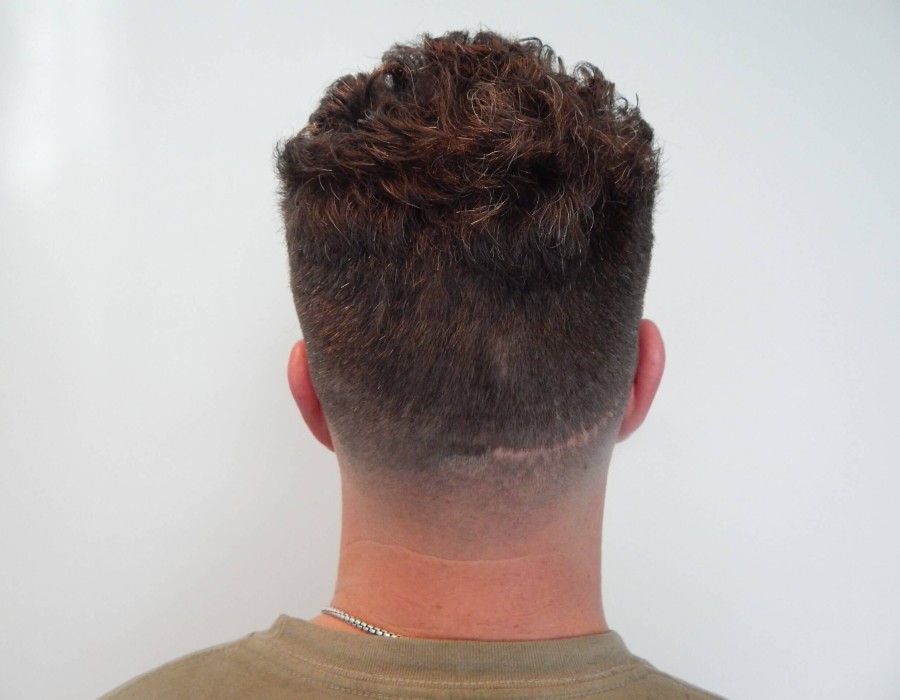This procedure has gained immense popularity due to its ability to restore natural-looking hair. Hair loss can be a distressing experience, leading many individuals to explore effective solutions like Hair Transplant in Dubai. However, one common concern among potential candidates is whether the treatment leaves visible scars. In this article, we will explore the scarring aspects of hair transplants, the different techniques used, and how to minimize visible marks for a seamless appearance.
- Hair transplants are a sought-after solution for hair loss.
- Scarring depends on the technique used.
- Proper aftercare can minimize visible marks.
Understanding Hair Transplant Techniques
Two primary techniques are used in Hair Transplant: Follicular Unit Transplantation (FUT) and Follicular Unit Extraction (FUE). Each method has different implications for scarring.
Follicular Unit Transplantation (FUT)
FUT involves removing a strip of skin from the donor area (usually the back of the head) and extracting hair follicles for transplantation.
Potential Scarring:
- Leaves a linear scar where the strip was removed.
- Can be concealed under surrounding hair if sufficient density remains.
Follicular Unit Extraction (FUE)
FUE is a minimally invasive technique where individual hair follicles are extracted and transplanted.
Potential Scarring:
- Leaves tiny dot-like scars that are less noticeable.
- No linear scar, making it a preferred choice for shorter hairstyles.
Key Points:
- FUT may leave a linear scar but is well-hidden with proper hair growth.
- FUE results in tiny, barely visible scars.
- The choice of technique depends on individual hair loss and preferences.
Factors Influencing Scar Visibility
Several factors determine how noticeable scars will be after a Hair Transplant.
Skin Type and Healing Ability
- Some individuals heal better, making scars less visible.
- Darker skin may show more noticeable scarring.
Surgeon’s Skill and Technique
- Precision in extraction and implantation reduces scarring.
- Advanced tools and methods improve aesthetic outcomes.
Post-Operative Care
- Proper wound care minimizes scarring.
- Avoiding sun exposure and following aftercare instructions helps.
Key Points:
- Healing varies based on skin type and aftercare.
- A skilled surgeon can reduce visible scarring.
- Following post-treatment guidelines ensures better results.
How to Minimize Scarring After a Hair Transplant
While some scarring is inevitable, certain steps can help reduce its visibility.
Choosing the Right Technique
- FUE is ideal for those concerned about visible scars.
- FUT may be suitable for individuals with sufficient donor hair density.
Proper Aftercare
- Keeping the scalp clean prevents infections.
- Avoiding strenuous activities reduces tension on healing areas.
Scalp Micropigmentation (SMP)
- A cosmetic tattooing technique that camouflages scars.
Key Points:
- Technique selection plays a crucial role in scarring.
- Following aftercare instructions is essential.
- SMP can help conceal scars if needed.
Common Myths About Hair Transplant Scars
Misconceptions often deter people from considering a hair transplant. Let’s debunk a few myths.
Myth 1: All Hair Transplants Leave Obvious Scars
- Modern techniques like FUE result in minimal scarring.
Myth 2: Scars Are Always Visible
- Properly performed transplants hide scars under natural hair growth.
Myth 3: Only FUT Causes Scarring
- Even FUE leaves tiny marks, but they are hardly noticeable.
- Not all transplants leave prominent scars.
- Skilled surgeons ensure scars are discreet.
- Both FUT and FUE have minimal scarring when done correctly.
Conclusion
A Hair Transplant is a reliable solution for hair loss, but scarring is a natural part of the process. The extent of visible marks depends on the technique used, the surgeon’s expertise, and post-operative care. By choosing the right method and following proper aftercare, you can achieve a natural-looking hairline with minimal scarring.






Comments